David Fisher’s Snug, Unplugged Workshop
A woodworker's space evolves around him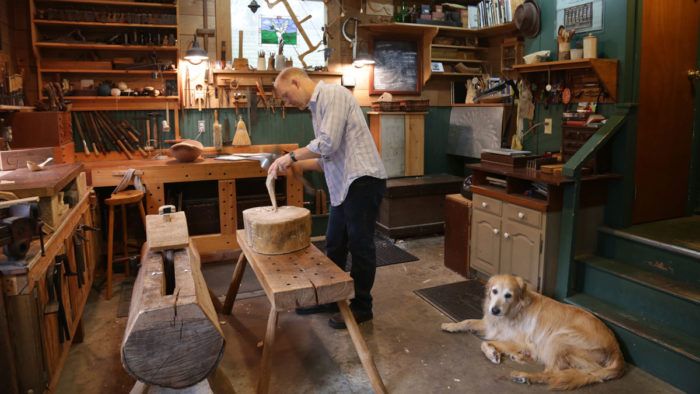
The little workshop at the back of our house has changed as much as I have since the day some 20 years ago when I first entered it. Today as I dive ever deeper into working green wood, it serves me perfectly. But its history reflects my own journey through the craft.
In 1996, my wife, Kristin, and I bought a century-old house in our hometown—a house showing its age and in desperate need of renewal. Fortunately, we were naïve about the amount of work that lay ahead; as we stood in the odd little attached garage that served as a vestibule, we focused on the potential and ignored the leaking roof.
This quirky L-shaped space was 19 ft. deep and 10-1⁄2 ft. wide, broadening to 15 ft. wide beyond a bump-out of the house. We agreed that our vehicle would stay outside—it was only a car after all. What few tools I owned were moved into this 250-sq.-ft. space that we were already calling the workshop.
For the first year or so, it remained unchanged but for some crude shelves and a cast-off chest of drawers I used as a workbench. It was the domain of chopsaws, caulking guns, paintbrushes, and utility knives as the infrastructure of the house took first priority. Rooms were transformed, floors were installed, and built-ins were built. As the list dwindled, my mind drifted to furniture and carving. It was time to outfit the shop.
I had worked in my high-school woodshop, in my dad’s basement, and in the living room of my first apartment, where I clamped boards to the coffee table to carve them, but this would be my own dedicated workshop. I went with what I knew: a basic workbench, low cabinets as a perch for benchtop power tools, and lots of pegboard and metal hooks. The workbench and the row of low cabinets still serve me well.
I stumbled into building a workbench that is as solid as the workshop itself. Using dimensional lumber, I constructed the supporting framework and secured it to the wall studs. I bought two sheets of 3⁄4-in. exterior plywood, ripped them lengthwise, and face-glued them into a four-layer sandwich of a benchtop. I drilled some dog holes and added a face vise and got to work.
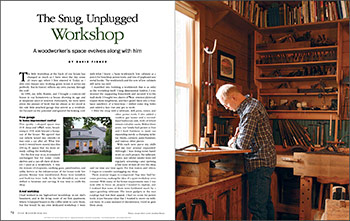
From Fine Woodworking #265
To view the entire article, please click the View PDF button below:






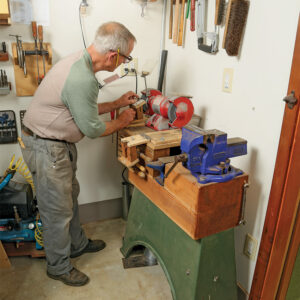





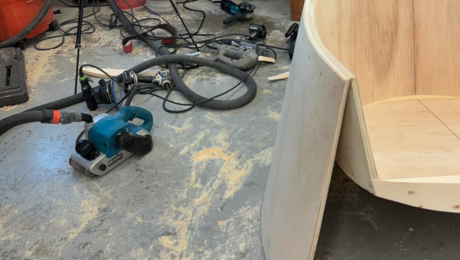
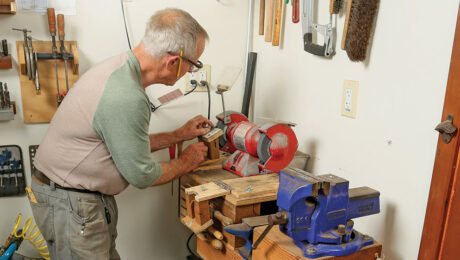








Comments
For once, an honest (?) reason for going powerless.... Work is beautiful!!!! And it is also work doesn't lend itself to power tools, at least not safely...... To those who love working in this manner- please don't look down your nose at us who enjoy (sort of), the whine of a table saw, the scream of a router, the constant dust that a 1000.00 dust system just doesn't seem to collect, and the hand tingling buzz of a vibrating sander....Your article is one of the few that omitted the purist insult. Thanks, your work is beautiful... Oh, I already said that... Have fun
David Fisher has a wonderful combination of talents. I was going to say a rare combination, but really it's probably not so rare, just a bit less developed in many folk. He has a keen eye for what's important. He is a very clear and inspiring teacher. Great aesthetics. And of course he does make rather fine bowls. Thanks David, you're giving a lot of pleasure to many people.
Reading David’s writing, and watching him work/listening to him teach is good for my soul. I need more.
Log in or create an account to post a comment.
Sign up Log in